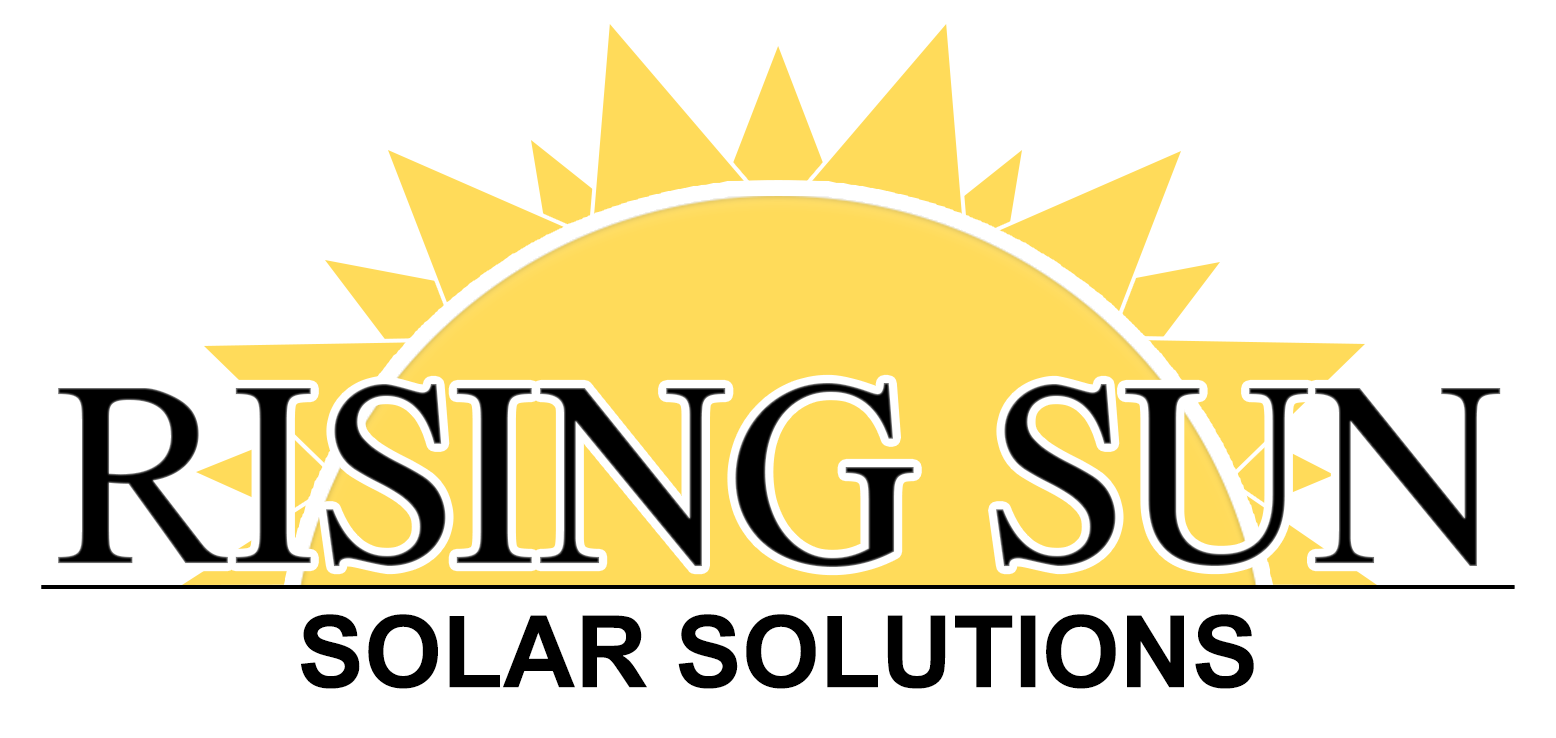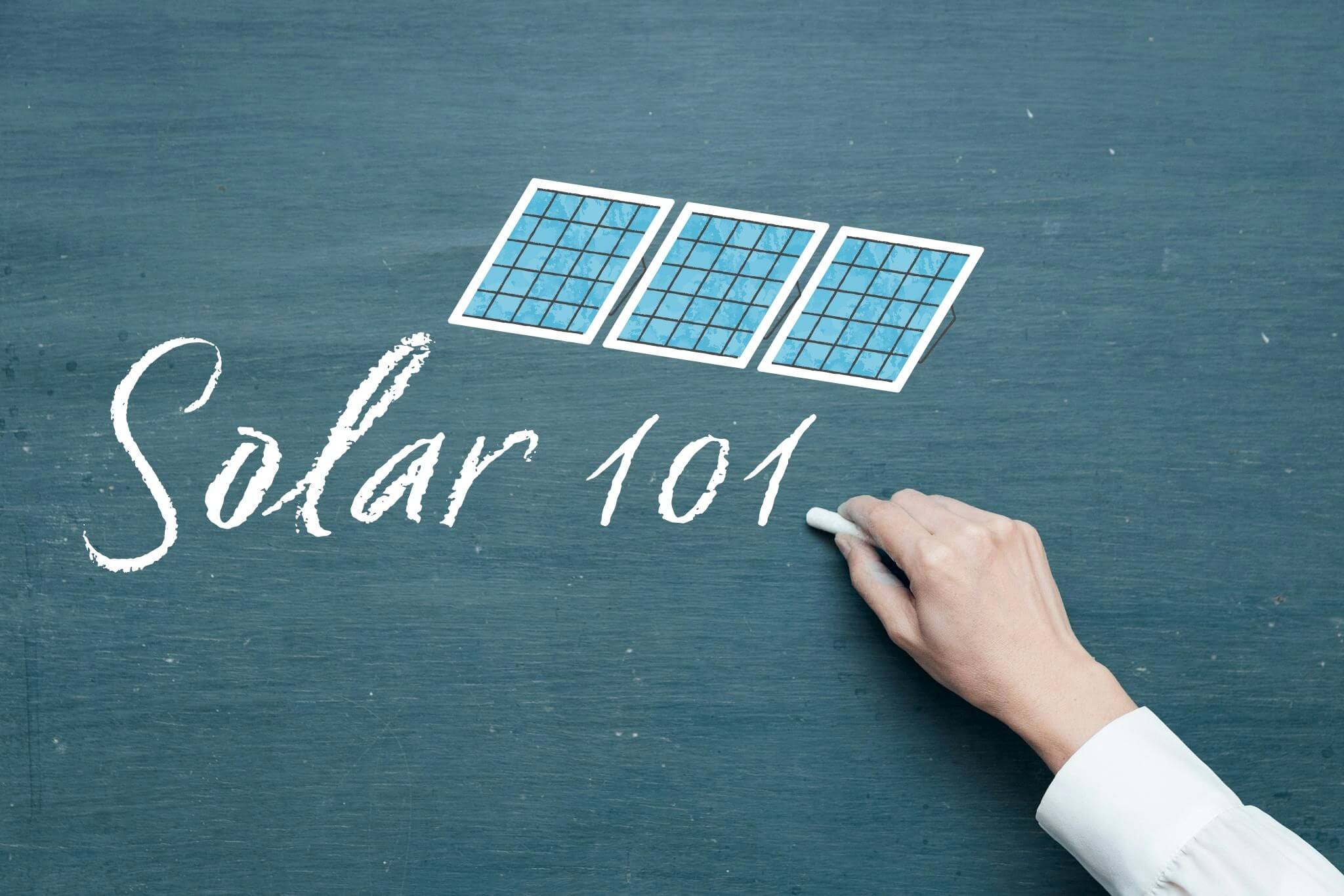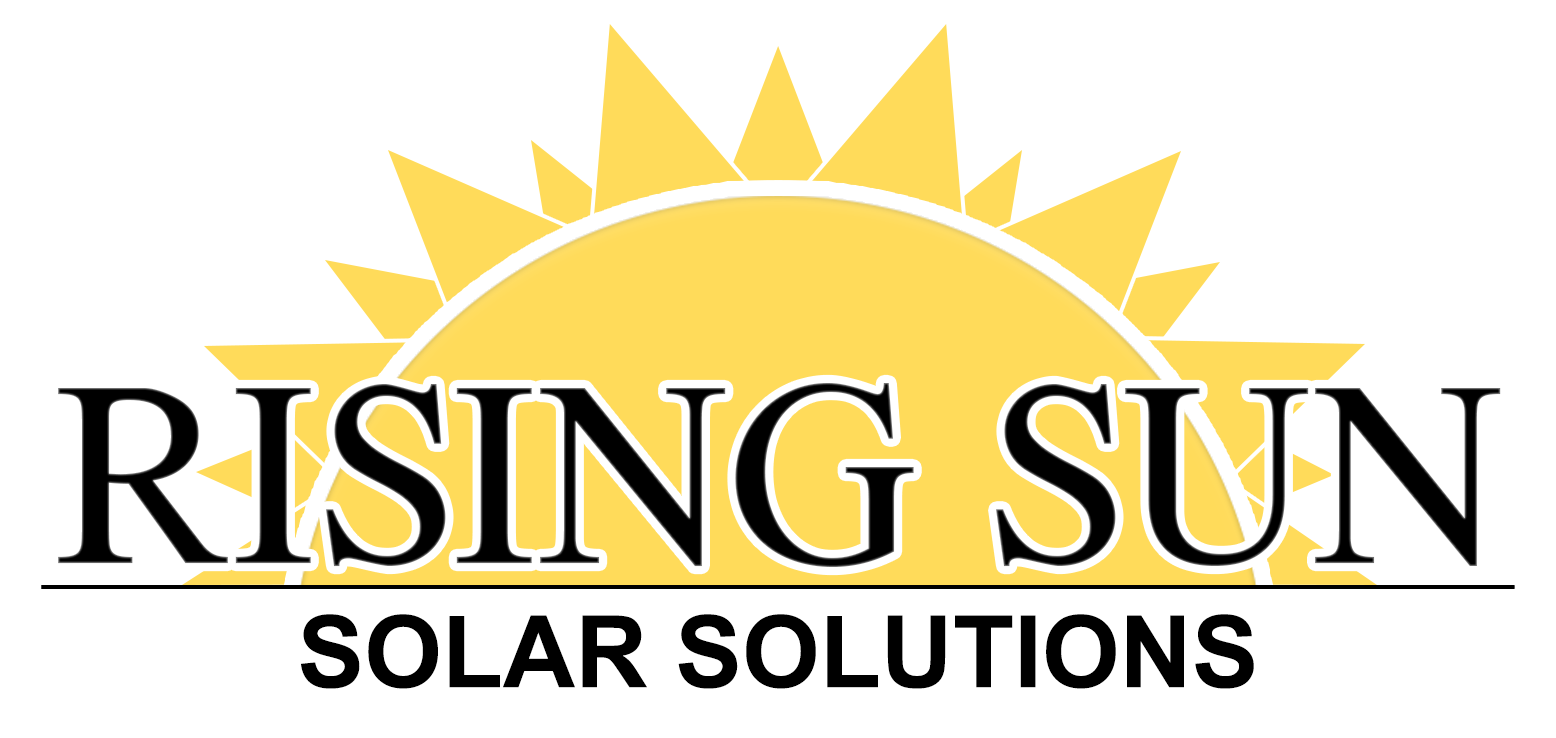A recent Forbes survey found that nearly 50% of homeowners plan to install solar panels. What is stopping them? While a third of the respondents say it is the upfront cost of solar energy stopping them, it just might be something else.
The lack of knowledge may be the major setback for most Americans who dream of going solar.
If you truly know how solar energy works, then it would be at the top of your list as a must-have addition to your home.
Increase your solar intelligence by reading this comprehensive Solar 101 guide.
What is Solar Energy?
Let’s start with the basics. Solar energy is the radiant light and heat from the sun that is captured using various technologies to generate electricity.
Technically, the sun’s energy is produced by nuclear fusion reactions deep within the sun’s core, where hydrogen atoms are converted into helium. This process releases an enormous amount of power in the form of electromagnetic radiation, which travels through space and reaches the Earth as sunlight.
This reaction creates a versatile and abundant resource that can be converted into various forms of usable energy, such as electricity and heat.
The process of converting solar energy into electricity is known as photovoltaics, which involves the use of solar panels that contain photovoltaic cells. These cells absorb the sun’s energy and generate an electric current that can be used to power homes, businesses, and even entire communities.
Even though technologies have evolved, solar energy is not a new concept—it has been used for centuries in various forms. From ancient civilizations using sunlight to light fires to modern photovoltaic systems powering homes, the potential of solar energy has always been immense and essential for life.
How Does Solar Energy Work?
Solar energy works by capturing the sun’s energy using solar panels, which convert sunlight into electricity. Here’s an overview of how this process works:
Photovoltaic Cells
Solar panels consist of many solar cells made from semiconductor materials, typically silicon. When sunlight hits these cells, it knocks electrons loose, creating an electric current.
Photovoltaic cells (PV cells) are the building blocks of solar panels. How much energy does a solar panel produce depends upon the efficiency of the cells to absorb visual light. Advances in technology are continually improving the efficiency of these cells.
Inverter
Once the energy is captured into the PV cells it’s time to convert that still energy into moving energy. The direct current (DC) electricity—generated by the solar cells—is converted into alternating current (AC) electricity using an inverter. AC electricity is the form of power used by most household appliances.
Inverters are crucial components of a solar energy system, and there are different types, including string inverters, microinverters, and power optimizers. Each type has its advantages and is suited to different installation conditions.
Electrical Panel
You need some way to control where this energy goes and how much. This requires an electrical panel.
The AC electricity is sent to the electrical panel ( aka breaker box) and distributed throughout your home to power your appliances.
The electrical panel ensures that the electricity generated by the solar panels is safely and efficiently distributed to your home’s circuits. It also allows for the integration of solar power with your existing electrical system.
Utility Meter
Any excess electricity that is not used can be sent back to the grid, causing the utility meter to run backward, which can result in credits from your utility company called net metering.
This process benefits homeowners financially by creating surplus energy that can be used to make a profit.
Policies for net metering vary by location, so it’s important to understand local regulations.
Battery Storage
Alternatively, excess electricity can be stored in a solar battery for later use, providing power even when the sun isn’t shining.
Solar batteries enhance the reliability of solar energy systems by ensuring a steady power supply during nighttime or cloudy days. Advances in battery technology are making storage solutions more efficient and affordable.
Advantages of Using Solar Energy
Solar energy acts just like your utility-provider’s electricity as it powers your home, keeps your lights on, and provides heating and cooling. However, there are a few differences that you will find very beneficial.
Environmental Benefits
One of the best benefits of solar is that it’s a clean energy. It doesn’t require mining, burning, or unnatural fusing of elemental compounds. Instead, solar energy occurs naturally, reducing harm to the planet.
In addition, solar panels are extremely durable, allowing them to be used for 20+ years without being replaced. This makes the manufacturing of solar panels a viable alternative to fossil fuels that require invasive and continuous drilling.
Economic Benefits
With an average 10% ROI, solar installation is an obvious worthwhile investment. Here’s how:
- By generating your own electricity, you can significantly lower your monthly energy bills.
- Reduce or eliminate your reliance on the grid and gain energy independence while avoiding fluctuating energy prices.
- Sell excess energy back to the utility company or earn solar renewable energy credits known as SRECs for the energy you produce.
The economic benefits of solar are so plentiful that most homeowners earn back their initial investment, usually in six to 10 years.
Additional Solar Energy Benefits
Other advantages of solar energy include its reliability, durability, appeal, and growth potential. Learn more about each of these perks below.
Low Maintenance
Solar panels require minimal maintenance, with most systems lasting 25-30 years with little to no upkeep.
Routine solar panel maintenance primarily involves keeping the panels clean and ensuring that debris doesn’t obstruct sunlight. Professional inspections every few years can help maintain optimal performance.
Increased Property Value
Homes equipped with solar energy systems can see an increase in property value.
Studies have shown that homes with solar panels often sell faster and at higher prices than non-solar homes. Buyers appreciate the potential for reduced energy costs and the environmental benefits of solar power.
Potential for Growth
Solar energy also has the potential to create jobs and stimulate economic growth. The renewable energy sector, including solar, is one of the fastest-growing job markets in many countries.
It is forecasted that solar energy will grow by 75% from 2023 to 2025, increasing from 163 billion kilowatt hours (kWh) to 286 billion kWh.
Factors to Consider Before Installing Solar
If you are reading this article, then you are probably very close to buying solar panels. Great! But, there are some factors to think about before getting them installed. Read on to find out.
Location and Sunlight Exposure
The effectiveness of solar panels largely depends on the amount of sunlight your location receives. Areas with higher solar irradiance will generate more electricity.
Before installing solar panels, it’s important to assess the potential of your location. Solar installers, like Rising Sun Solar Solutions, have tools and software to estimate sun exposure and find the best site location to install your solar panels.
Roof Condition and Direction
Your roof should be in good condition and have a sufficient lifespan to support solar panels. A roof that needs repair or replacement soon should be fixed before installation. Otherwise, you will need to uninstall and reinstall your solar panels to mend roof damage.
The orientation and angle of your roof also play a crucial role in the efficiency of solar panels. South-facing roofs with minimal shading are generally ideal for maximum sunlight exposure.
Energy Needs
Assessing your household’s energy consumption will determine the size of the solar energy system that you need. The solar energy installer will review your electricity bill and see your usage over the past year to project how many solar panels you need.
You will also let them know how much solar energy you want to supplement your electricity, which could be as high as 100%.
Budget and Financing
Before buying solar panels and installing them, you should consider your budget and choose the best way to make your purchase. Do this by knowing your options.
For instance, you should know whether it is better to lease or buy solar panels. Leasing vs buying solar panels means that you either rent them from an installer or own them. The biggest difference between the two is that you don’t own your energy when you lease, so you can’t take advantage of many of its benefits.
Another financial decision requires you to choose a solar loan or pay for your solar panels upfront. A solar loan is an affordable option that allows you to make monthly payments toward your solar unit. This option is better than leasing because you will own your solar unit.
Local Regulations
Check local zoning laws, building codes, and homeowners’ association rules that may affect the installation of solar panels.
Compliance with local regulations is essential to avoid legal issues and ensure a smooth installation process. Professional installers handle the permitting process and ensure adherence to all codes.
How to Install a Solar Panel
Installing solar panels on your home requires knowledge and experience. You want to hire a professional that considers your solar needs, has experience with solar panels, and understands electrical currents.
Use this article as a guide to finding the right solar installer near you.
Professional Solar Installer Process
Once you decide on an installer like Rising Sun Solar Solutions, the installation process will begin. Here is a step-by-step guide so you know what to expect.
1. Site Assessment: A professional will visit your home or use geospatial software to evaluate the suitability of your roof and the amount of sunlight it receives.
2. System Design: Based on the site assessment, the installer will design a solar system tailored to your energy needs and roof structure.
3. Permits and Approvals: The installer will handle all necessary permits and approvals required by local authorities.
4. Installation: The installation process involves mounting the solar panels on your roof or property grounds, wiring the system, and connecting it to your electrical panel.
5. Inspection and Activation: After installation, the system will be inspected by local authorities to ensure it meets all safety and code requirements. Once approved, the system will be activated, and you can start generating solar power.
Solar installers may also discuss with you any solar incentives that you may qualify for such as the Federal Tax Credit. They will also review available installation and manufacturer warranties.
DIY Installation
While it is possible to install solar panels yourself, it is HIGHLY recommended to use a professional installer to ensure the system is safe, efficient, and compliant with local regulations.
DIY installation can be cost-effective but comes with risks such as improper installation, voiding warranties, and safety hazards. Weighing these factors is crucial before deciding to go the DIY route.
Installing solar panels properly requires knowledge of electrical systems, local building codes, and safety standards. A professional installer brings the expertise needed to handle these complexities.
Average Cost of Solar Panels
The cost of solar panels varies based on several factors, including system size, location, and installation complexity. On average, the cost of a residential solar panel system in the United States ranges from $15,000 to $22,500 before incentives. Federal and state incentives can significantly reduce the overall cost, making solar more accessible to homeowners.
Cost Breakdown
Breaking down the cost of solar can be tricky because it can vary according to your needs and which solar installer you choose. When you pick a family-run, local company like Rising Sun Solar Solutions, you avoid overpaying for labor and extra costs that keep big solar installers up and running.
Here is an average breakdown of costs you should see for solar installation:
- Solar Panels: 30-40% of the total cost
- Inverter: 10-15% of the total cost
- Mounting Hardware: 10% of the total cost
- Installation Labor: 20-30% of the total cost
- Permits and Inspections: 5-10% of the total cost
Various financing options, including solar loans, can help make the initial investment more manageable.
As mentioned earlier, the payback period for solar panels typically ranges from 6 to 10 years, depending on energy savings and local incentives. After this period, the energy produced is essentially free.
Common Solar Energy Facts
When deciding whether to go solar, it is important to know the facts from fiction. Keep these top 5 solar energy facts in mind when making your choice.
1. Renewable Energy Source: Solar energy is renewable and will not run out as long as the sun exists.
2. Most Affordable: Solar panel prices are at their all-time low, dropping 80% since 2010.
3. Technological Advancements: Innovations in solar technology are continually improving efficiency.
4. Profitable: Many regions offer net metering programs, allowing homeowners to sell excess electricity back to the grid.
5. Versatility: Solar energy can be used for various applications, including electricity generation, heating, and electric vehicle charging.
Common Solar Energy Misconceptions
Now that you know the facts, let’s go over some of the more common solar energy misconceptions. Here’s our top four:
1. Solar Panels Don’t Work in Cloudy Weather
You are probably wondering, “Do solar panels need direct sunlight to work?” While solar panels are most efficient in direct sunlight, they can still generate electricity on cloudy days. Modern panels are designed to capture diffuse light, allowing them to function in less-than-ideal conditions.
Solar panels can produce up to 25% of their rated capacity even on overcast days. This means that they remain a viable energy source in regions with variable weather conditions.
Plus, with backup batteries, you can use your excess energy if you live in an area with prolonged overcast days.
2. Solar Energy is Too Expensive
The initial cost of solar installation can be high, but various incentives, rebates, and financing options can make it affordable. Additionally, the long-term savings on energy bills often offset the upfront costs.
The cost of solar technology has decreased significantly over the past decade, making it more accessible to homeowners. Financial models such as solar loans can further reduce the barrier to entry.
3. Solar Panels Require Constant Maintenance
Solar panels require minimal maintenance, primarily consisting of occasional cleaning and periodic inspections to ensure optimal performance.
Most solar panels come with warranties like Rising Sun Solar Solutions’ 10-year installation and 25-year manufacturer warranties, covering any potential defects or issues. Regular monitoring can help detect and address problems early, ensuring long-term reliability.
4. Solar Panels Damage Your Roof
When properly installed by professionals, solar panels can protect your roof from weather damage and extend its lifespan by shielding it from the elements.
Installation typically involves mounting the panels on racking systems that are securely attached to the roof. This setup ensures that the roof structure remains intact and well-protected.
Other misconceptions include the belief that solar panels are unattractive or that they significantly reduce home resale value. In reality, many homeowners find solar panels aesthetically pleasing and appreciate the increased property value they can bring.
The Future of Solar Energy
It shouldn’t be surprising that solar energy has a bright future—literally and figuratively. Popularity and affordability of solar panels are increasing for several reasons. Here are a few:
Technological Innovation
Advancement in solar tech is a major contributor to its appeal. In addition, new gadgets, integration, and applications will further make solar panels essential to the future of energy.
Improved Efficiency
Ongoing research is focused on developing more efficient solar cells, such as perovskite and multi-junction cells.
These advanced technologies have the potential to significantly increase the amount of electricity generated from the same amount of sunlight. As efficiency improves, the cost per watt of solar power continues to decrease.
Energy Storage
Advancements in battery technology will enhance the ability to store solar energy for use during non-sunny periods.
Improved energy storage solutions will make solar power more reliable and enable greater independence from the grid. Innovations in this area are crucial for expanding the use of solar energy in residential, commercial, and industrial applications.
Integration with Smart Grids
Solar energy systems will increasingly integrate with smart grids, allowing for more efficient energy distribution and management.
Smart grids use digital technology to monitor and manage the flow of electricity, improving the reliability and efficiency of the power supply. Integration with solar systems can optimize energy use and enhance grid stability.
Putting Your Solar 101 Knowledge to Use
You now know that solar is beneficial (financially and environmentally), is more affordable than ever, and offers you the freedom to produce and own your energy. Additionally, you know what it takes for proper installation and optimal efficiency as well as the need to find the best solar installer.
However, it doesn’t do much good to learn about Solar 101 without taking action. Your next step is to apply what you’ve learned in this article to make an informed decision about going solar.
Start by contacting Rising Sun Solar Solutions to discuss your personalized solar plan.


